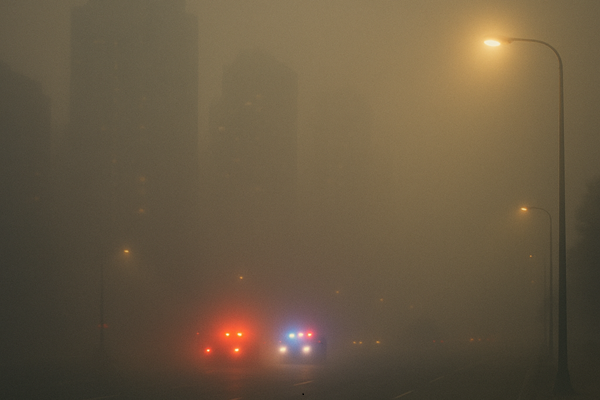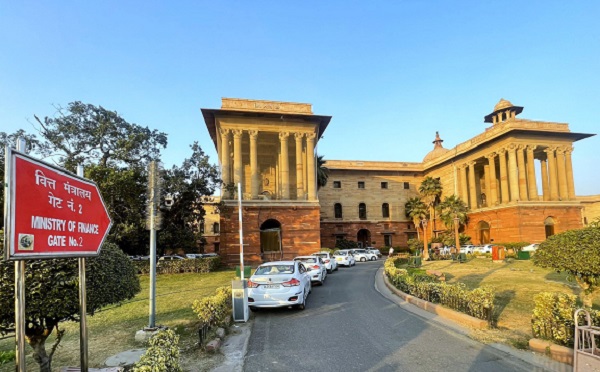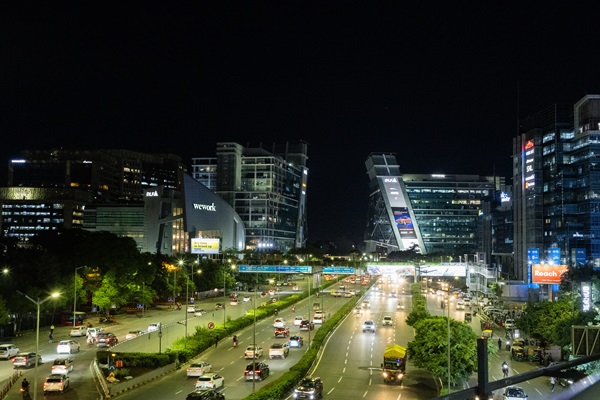.png)

By Amitrajeet A. Batabyal*
Batabyal is a Distinguished Professor of economics and the Head of the Sustainability Department at the Rochester Institute of Technology, NY. His research interests span environmental, trade, and development economics.
September 22, 2025 at 11:22 AM IST
A recent report noted that India enjoys the dubious distinction of having 84 of the 100 most polluted cities in the world. Even though the severity of the air pollution problem in India is well known, what is less understood is that there appears to be a connection between air pollution and criminal activity.
New research addresses this question by analysing the manner in which exposure to air pollution increases criminal activity. It leverages a unique dataset combining over 1.8 million recorded criminal offenses from the London Metropolitan Police Service with daily pollution readings from an extensive network of monitoring stations.
The key pollution measure used is the Air Quality Index, calculated according to US Environmental Protection Agency guidelines. To establish causality between air pollution and criminality, the research employs a multi-faceted empirical strategy.
First, the research uses ward-level fixed effects models, which compare crime rates on high-pollution days to low-pollution days within the same ward, thereby controlling for all time-invariant local characteristics. Second, it implements two instrumental variable approaches to address empirical concerns with causality. One instrument is wind direction, which shifts pollution concentrations across the city. The second is atmospheric temperature inversions, i.e., meteorological events that trap pollutants near the ground. These two instruments induce random variation in pollution, thereby allowing for a cleaner identification of its effect on crime.
Key Findings
A 10-point increase in the AQI leads to a 1.2% rise in the crime rate in one of the empirical models. In addition, when wind direction is used as an instrument, the effect is magnified. In other words, a 10-point AQI increase causes a 2.6% rise in crime.
These effects are not just statistically significant but also meaningful in economic terms. For instance, crime is 3.7% higher on days with an AQI above 35, a level classified as “Good” by US standards, highlighting that effects are visible at pollution levels well below current regulatory thresholds.
The research also finds that crime increases with higher pollution levels. This effect is comparable to a 10% reduction in police presence, underscoring its policy relevance. A back-of-the-envelope calculation reveals that a one standard deviation increase in daily pollution costs London nearly £800,000 per day in additional crime-related costs.
The connection between air pollution and criminality is not limited to violent crimes but also extends to economically motivated crimes such as theft and criminal damage.
The impact of air pollution on criminal behavior is also distributionally uneven. While wealthier wards (proxied by house prices) have higher average pollution levels, the effect of an additional unit of pollution is larger in poorer wards. Lower-income populations are thus more vulnerable to the crime-inducing effects of pollution, despite often having lower exposure.
Why does pollution increase crime?
The research explores three potential channels: by altering risk perceptions, by changing risk preferences, or by varying the perceived payoff from crime.
Through a series of tests, the research rules out the first two explanations. It finds no evidence that pollution affects police deployment or induces greater risk-taking (proxied by lottery ticket sales). Instead, the most plausible explanation is that pollution increases the discount rate applied to future costs—in other words, it reduces fear of punishment relative to immediate gain.
Drawing on medical literature, the research notes that acute exposure to fine particulate matter like PM2.5 elevates stress hormones such as cortisol, which experimental studies have linked to impatience and a preference for immediate rewards. This heightened discounting makes individuals more likely to commit crimes by reducing the perceived future cost of punishment relative to the immediate benefit of the act.
Policy Implications
The central implication for policy makers in India is that improving urban air quality may be a powerful, though previously unrecognised, tool for crime reduction. This suggests integrating pollution forecasts into predictive policing models to optimise resource allocation. Moreover, since the effects are observed at pollution levels deemed safe by current regulations, tightening air quality standards can have significant economic and social benefits.
Ultimately, this research makes a compelling case that environmental policy is linked to social policy. By revealing that air pollution increases crime, it argues that efforts to improve air quality are not just about protecting health but also a critical investment in public safety. Ignoring the non-health costs of pollution therefore leads to a significant underestimation of its true societal burden.




